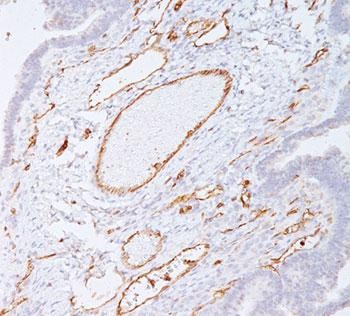Cookie preferences
This website uses cookies, which are necessary for the technical operation of the website and are always set. Other cookies, which increase the comfort when using this website, are used for direct advertising or to facilitate interaction with other websites and social networks, are only set with your consent.
Configuration
Technically required
These cookies are necessary for the basic functions of the shop.
"Allow all cookies" cookie
"Decline all cookies" cookie
CSRF token
Cookie preferences
Currency change
Customer-specific caching
FACT-Finder tracking
Individual prices
Selected shop
Session
Comfort functions
These cookies are used to make the shopping experience even more appealing, for example for the recognition of the visitor.
Note
Show the facebook fanpage in the right blod sidebar
Statistics & Tracking
Affiliate program
Conversion and usertracking via Google Tag Manager
Track device being used
| Item number | Size | Datasheet | Manual | SDS | Delivery time | Quantity | Price |
|---|---|---|---|---|---|---|---|
| NSJ-V2219-20UG | 20 µg | - | - |
3 - 10 business days* |
361.00€
|
||
| NSJ-V2219-100UG | 100 µg | - | - |
3 - 10 business days* |
781.00€
|
If you have any questions, please use our Contact Form.
You can also order by e-mail: info@biomol.com
Larger quantity required? Request bulk
You can also order by e-mail: info@biomol.com
Larger quantity required? Request bulk
0.2 mg/ml with 0.1 mg/ml BSA (US sourced), 0.05% sodium azide. PECAM-1, or platelet endothelial... more
Product information "Anti-PECAM-1, clone C31.7"
0.2 mg/ml with 0.1 mg/ml BSA (US sourced), 0.05% sodium azide. PECAM-1, or platelet endothelial cell adhesion molecule-1, also called CD31, is made up of six extracellular immunoglobulin-like domains, a single transmembrane domain, and a cytoplasmic domain containing serine and tyrosine residues that when phosphorylated, activate the molecules signaling function. It is expressed on platelets, monocytes, neutrophils, bone marrow macrophage and dendritic cells precursors, and at the intracellular junction of endothelial cells. PECAM-1, on the endothelial lining of blood vessels, helps maintain the vascular barrier. In response to inflammatory mediators, the endothelial pull away from each other allowing fluid, inflammatory cells and proteins into the extravascular space. The inflammatory response fades as adhesion of neighboring cells increase. PECAM-1 also plays an important role in angiogenesis, promoting endothelial cell motility, junctional development and capillary morphogenesis. Protein function: Induces susceptibility to atherosclerosis. Cell adhesion molecule which is required for leukocyte transendothelial migration (TEM) under most inflammatory conditions. Tyr-690 plays a critical role in TEM and is required for efficient trafficking of PECAM1 to and from the lateral border recycling compartment (LBRC) and is also essential for the LBRC membrane to be targeted around migrating leukocytes. Prevents phagocyte ingestion of closely apposed viable cells by transmitting 'detachment' signals, and changes function on apoptosis, promoting tethering of dying cells to phagocytes (the encounter of a viable cell with a phagocyte via the homophilic interaction of PECAM1 on both cell surfaces leads to the viable cell's active repulsion from the phagocyte. During apoptosis, the inside-out signaling of PECAM1 is somehow disabled so that the apoptotic cell does not actively reject the phagocyte anymore. The lack of this repulsion signal together with the interaction of the eat-me signals and their respective receptors causes the attachment of the apoptotic cell to the phagocyte, thus triggering the process of engulfment). Isoform Delta15 is unable to protect against apoptosis. Modulates BDKRB2 activation. Regulates bradykinin- and hyperosmotic shock-induced ERK1/2 activation in human umbilical cord vein cells (HUVEC). [The UniProt Consortium]
| Keywords: | Anti-CD31, Anti-PECA1, Anti-GPIIA', Anti-PECAM1, Anti-EndoCAM, Anti-PECAM-1, Anti-Platelet endothelial cell adhesion molecule, PECAM-1 Antibody |
| Supplier: | NSJ Bioreagents |
| Supplier-Nr: | V2219 |
Properties
| Application: | WB, FC, IHC, IF |
| Antibody Type: | Monoclonal |
| Clone: | C31.7 |
| Conjugate: | No |
| Host: | Mouse |
| Species reactivity: | human, cynomolgus monkey, rabbit |
| Immunogen: | Human recombinant PECAM-1 / CD31 protein was used as the immunogen for this antibody. |
| Format: | Purified |
Database Information
| KEGG ID : | K06471 | Matching products |
| UniProt ID : | P16284 | Matching products |
| Gene ID : | GeneID 5175 | Matching products |
Handling & Safety
| Storage: | +4°C |
| Shipping: | +4°C (International: +4°C) |
Caution
Our products are for laboratory research use only: Not for administration to humans!
Our products are for laboratory research use only: Not for administration to humans!
Information about the product reference will follow.
more
You will get a certificate here
Viewed











